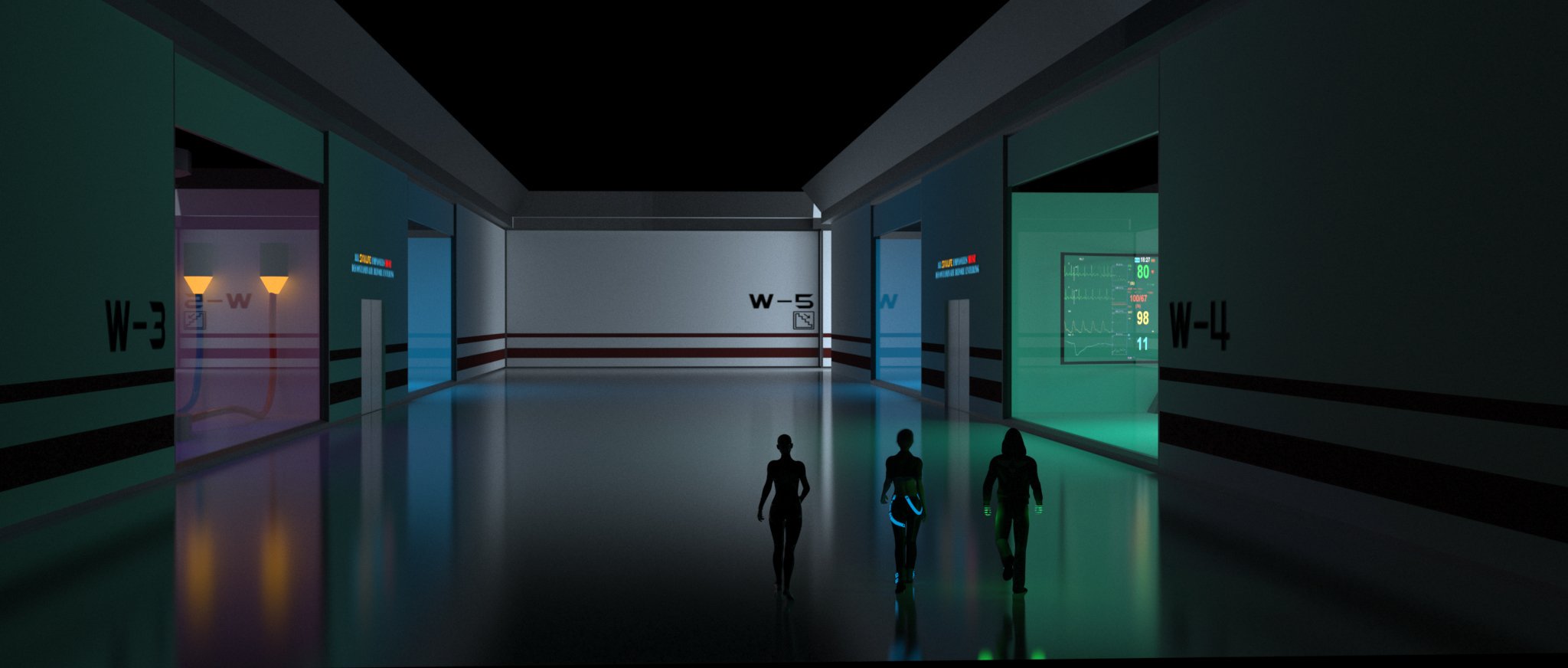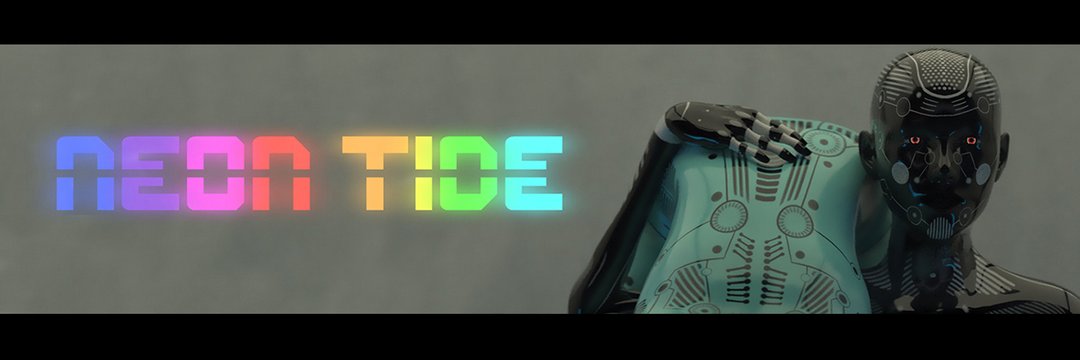A panel for upcoming cyberpunk visual novel Neon Tide at Anime Expo hosted five speakers—moderator Simon Tse, and most of the game’s development team from Skyride Studios.
With a panel made mostly of composers, Luis Zavala, Jason Lester, and Mike Bearden; Neon Tide was discussed through a sound-heavy perspective.
“We sync very well on music,” a panel member said.

Audio Before Visual
The panel discussed that while most visual novels incorporate music and sound effects later in the development cycle, Skyride did the opposite. There were times when scenes from Neon Tide were made based on the music.
Will Novy, who covers art and other aspects of the game’s development at Skyride, was shown concept songs that eventually became Neon Tide. The experience was comparable to making a fictional soundtrack for a cyberpunk movie that doesn’t exist, like a concept album.
This approach felt fitting since Novy had wanted to incorporate more movie aspects into the game. In fact, team members noted that they found making a visual novel felt closer to the experience of making a movie than a game.
Still, there were differences, such as the divergence from a typical movie script once the game entered the territory of branching choices. This led to the creation of flowcharts, both for the script and the musical score.

Retextured 3D animation gives the game its cyberpunk theme.
Artificial Leitmotifs
Neon Tide follows three A.I.—Beta who wants to be human, Lucy who wants revenge, and Victoria who wants peace and equality. In their world, a computer virus runs rampant infecting A.I. and forcing them to attack humans.
“Each character had a specific sound to it,” one of the representatives said. They added that Beta, a primarily holographic A.I., always has “a slightly glitchy sound.”

While Beta was an early favorite for one of the team (due to the character’s holographic nature) another member confessed that Lucy was his personal favorite.
“The way Lucy is framed is not the way you expect her to go,” they said. “I like a walking contradiction.”

Sonic Breakdown
During the panel, the team noted that while it’s possible to get perfect timing with audio in film and television, it’s harder with games. You just don’t know when the player will make something happen.
This led to Skyride breaking the game’s audio into key elements:
- Music
- Ambient Noise
- Impressionistic Sound Effects
They explained that impressionistic audio was about avoiding literal interpretations. For instance, to get sound for a cop car, they would use a sound to represent it, rather than record the sound of a regular car. Instead, they mixed up the sound design of modulated bass and something that sounded aerial for the vehicle.

Depending on visual complexity, the time needed to render a 3D image could vary.
“You don’t have to make sounds sound exactly the way they are,” one of the panel members pointed out.
The Skyride team added that they strove for creative audio, and had a preference for practical recording, stating that it felt more organic.
They emphasized this sense of a more organic feeling with an observation about cats. It often feels like you hear the same cat repeatedly in movies, suggesting that multiple productions are using the same audio from a sound library. This led the team to the realization that they could just record their own cat, for a more distinct listening experience.
However, they admitted that sound libraries were good for certain things, like dealing with the audio for a lot of footsteps.

Visual Novel Maker was Skyride’s program of choice after a difficult experience with CryEngine 3 on a previous project.
Snippets of a Score
Throughout the panel samples of the game’s score were shared with the audience, including: “Bad Blood,” “Alleyway Blues,” “Subterania,” and “Simulife.”
The team described “Subterania” as a tricky one to do. It involved manipulating a bunch of sound effects to make the track’s use of guitar sound less like a guitar.
“We had a few different versions of this song,” a team member noted. They added that the first version was darker.
“Subterania” is also the name of a supposedly safe haven in Neon Tide’s story.
On the other hand, “Simulife” is the theme music for the corporation that creates the A.I. in Neon Tide. The team looked to Alien: Covenant, Prometheus, and Resident Evil’s Umbrella Corporation for inspiration.
“Trying to think who would these people be like,” a Skyride rep said.

According to Neon Tide’s Steam page, the game will be available on Aug. 28. Skyride will also release Neon Tide’s soundtrack.



